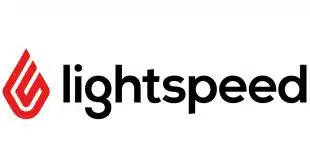As momentum behind open banking grows, more financial-service technology providers are jockeying for a piece of this nascent but rapidly growing market.
GoCardless, a London-based fintech and provider of bank-to-bank payments, on Tuesday launched Instant Bank Pay, a new open-banking app for its payment platform. Instant Bank Pay allows merchants and small businesses that generate revenues through recurring billing, such as subscription-based services and monthly invoicing, to accept one-time bank-to-bank payments from new and existing customers, while continuing to debit those customers’ bank accounts for recurring payments.
Open-banking connections are the vital links that let apps like Venmo (peer-to-peer payments), Chime (online banking), and Betterment (digital investing) verify, and in some cases debit, accounts at financial institutions on behalf of clients.
One of the challenges facing recurring-revenue merchants is collection one-time payments, such as the first month’s payment at the start of a subscription, a purchase of additional goods or services, or the deposit of money to an account outside of a customer’s regular payment schedule. Eighty-five percent of recurring-revenue merchants have a need to collect additional one-time payments, according to GoCardless.

Unlike transactions charged to a credit or debit card, a direct debit from a bank account through a non-card-based transaction, such as an automated clearing house transaction, does not provide immediate payment authorization. As a result, recurring-revenue merchants either turn to card payments, which charge a transaction fee, or manual bank transfers, which can be time-consuming to process, says Siamac Rezaiezadeh, head of product marketing for GoCardless.
In contrast, Instant Bank Pay provides immediate authorization through application programming interfaces that provide direct links to banks that support open banking, according to GoCardless.
Merchants can build the Instant Bank Pay option into their checkout flow or send a payment request via email to the customer with a with a link to pay directly from their banking account. GoCardless, which has more than 60,000 clients, says open banking can work with merchants using any revenue model.
“Recurring-revenue merchants want instant visibility into one-time payments to know that the transaction will go through, and to avoid tacking the cost of the transaction onto the customer’s recurring bill,” Rezaiezadeh says. “Instant confirmation provides better visibility of payments, eliminates costly credit card fees, gets merchants paid faster, and avoids late payments.”
For recurring payments, GoCardless’s platform supports direct links to bank accounts through non-card-based bank debit networks in eight countries, including the United States.
GoCardless, which plans to use some $95 million in funding it received in late 2020 to accelerate its open-banking strategy, will first launch Instant Bank Pay in the United Kingdom, then roll it out to other markets.
A U.S. rollout will come later. Given that open banking is driven more by the private sector in the United States than government agencies and regulators, unlike the case in the United Kingdom and Europe, GoCardless expects to launch Instant Bank Pay in the U.S. market in 2022, says Rezaiezadeh. That will allow time to address another hurdle. Some 52% of U.S. consumers do not understand what open banking is, according to GoCardless. Of the consumers that have heard of open banking, 37%, say they think of it like a 5G broadband cellular network. They know they will benefit from it, but don’t really understand the technology behind the network.
“Open banking is still a nascent concept [to U.S. consumers], but once you explain what it can do [for] them, they like it,” Rezaiezadeh says.




